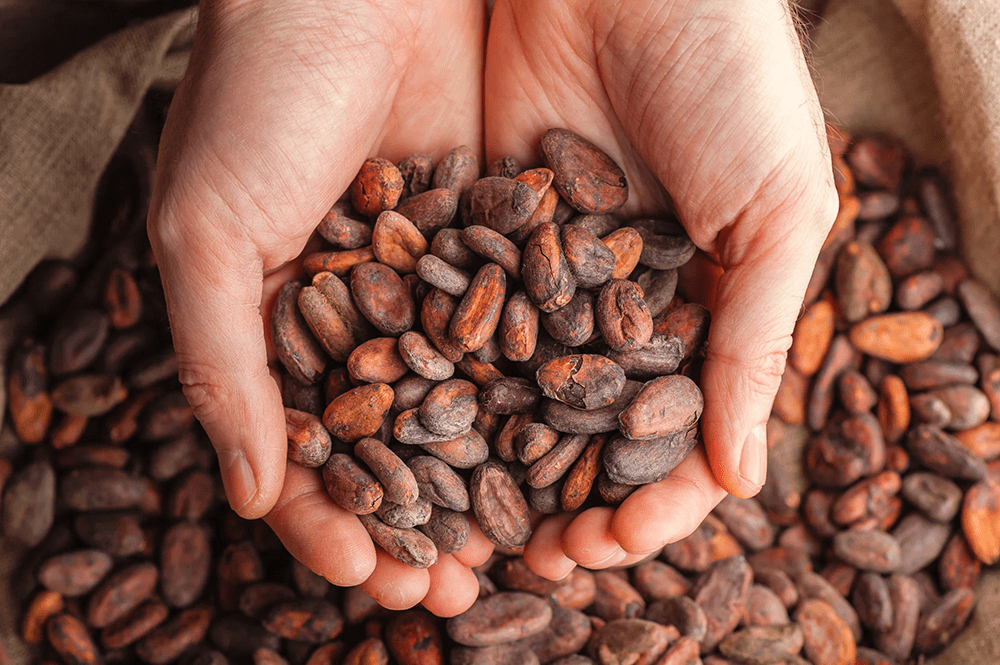Dark chocolate tastes bitter due to its high cocoa content and the presence of specific compounds found in cocoa.
Here’s why:
High Cocoa Content
Dark chocolate typically contains a higher percentage of cocoa solids compared to milk chocolate, which means it has more natural cocoa flavours. These flavours include both bitter and complex notes.
Theobromine and Caffeine
Cocoa contains natural compounds like theobromine and caffeine, which contribute to its bitterness. These compounds are also responsible for some of the stimulating effects of chocolate.
Polyphenols, Flavonoids and Alkaloids
Cocoa is rich in polyphenols, a type of antioxidant. While beneficial for health, polyphenols have a naturally bitter taste. The higher the cocoa content, the more polyphenols are present.
Also present are flavonoids and alkaloids. These natural compounds together, are known to have simultaneously a bitter, astringent and acidic taste.

Low Sugar Content
Unlike milk chocolate, dark chocolate has little to no added sugar. Sugar helps to mask the bitterness in chocolate, so its absence in darker varieties makes the bitterness more prominent.
Lack of Milk
Milk in chocolate acts as a buffer to the bitter flavours, giving milk chocolate a smoother, sweeter taste. Dark chocolate lacks milk, allowing the natural bitter flavours of cocoa to shine through.
Roasting and Processing
The way cocoa beans are roasted and processed also affects the bitterness. Longer roasting or improper processing can intensify bitter flavours.
This kind of bitterness is often found in dark chocolate manufactured at a large scale and standardized, where the cacao used is of the lowest quality: cheap, badly fermented, and defected. The aggressive, rushed and industrial manufacturing strategies only intensify the starting bitterness of these cacao beans (instead of toning it down).

Mass-produced chocolate is often characterized by a pungent and unpleasant bitterness. This is the kind of dark chocolate that consumers buy just because “it’s the healthier option”, while secretly hating its taste (or worse, they think that this is what dark chocolate is supposed to taste like).
Not all cacao beans are created equal. High-yield and commercial cacao varieties tend to have a higher level of bitterness compared to specialty and more rare varieties with naturally sweet tasting notes and a complex flavour profile.
The cacao beans deemed high-quality will produce less bitter chocolate, while the chocolate produced with poor-quality cacao beans will be very bitter.
A Point to Note – It also happens that we mistake bitterness for other attributes like acidity or astringency. When you feel a tightening feeling and lack of lubrication in the mouth, that’s not bitterness but astringency. When you taste something pungent, sharp and sour, it can also be acidity (citric, lactic or malic).
If the bitterness is too strong for your preference, you might try a dark chocolate with a slightly lower cocoa percentage, such as 60-70%, or one with added ingredients like nuts or fruit to balance the flavour.
